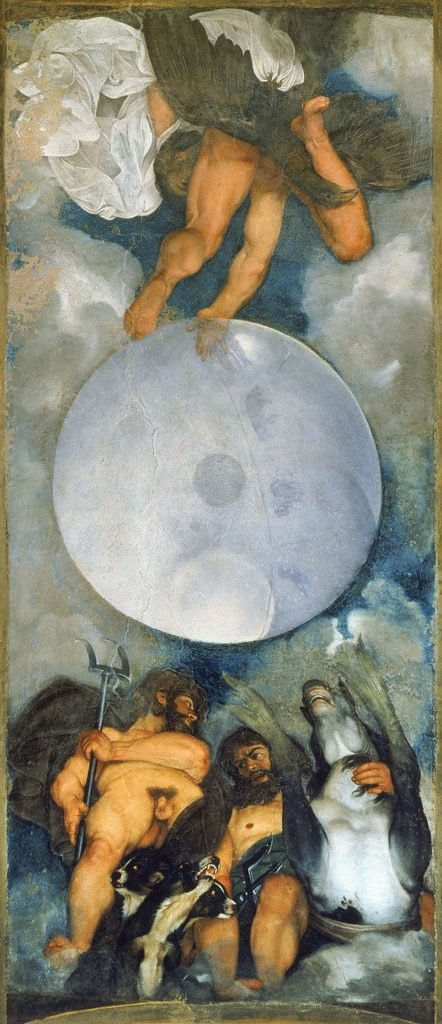Roman Villa with Caravaggio Masterpiece Draws No Bidders at Auction
By Katie Bono
Princess Rita Boncompagni Ludovisi outside Casino Ludovisi. Reuters, Remo Casilli
The recent unsuccessful auction of Casino Ludovisi on January 18th had all the elements of a stage drama: an inheritance dispute, a 400-year old Roman villa, and a trove of priceless art inside. Casino Ludovisi was purchased in 1621 by Ludovico Ludovisi from Cardinal del Monte and has remained in the Ludovisi family ever since. The main reason for the villa’s initial asking price of 470 million euro is the Caravaggio fresco Jupiter, Neptune, and Pluto in the house’s laboratorio. The work is Caravaggio’s only fresco and is a response to critics of his drawing skills. In the work, Caravaggio demonstrates his incredible capacity for foreshortening; the Roman gods are depicted standing and staring down at the viewer from the heavens. The laboratorio was a space where Cardinal del Monte conducted alchemical experiments and the subject matter reflects a belief in a world connected by natural magic.
Caravaggio, Jupiter, Neptune and Pluto (ca. 1597). Collection of the Villa Aurora.
Alessandro Zuccari, a professor at University of Rome La Sapienza, was called upon to appraise the property and valued the Caravaggio fresco alone at 310 million euro. The villa also includes a sculpture by Michelangelo, a wall painting by Guercino, a spiral staircase designed by Carlo Maderno (better known for designing the facade of St. Peter’s Basilica), and a telescope gifted to the Ludovisi family by Galileo. Further, the villa is built on land that Julius Caesar himself lived on. T. Corey Brennan, a classics professor at Rutgers University, maintains that the villa contains even more priceless art to be discovered. More frescoes have been detected under false and dropped ceilings and radar technology has shown ancient archeological ruins beneath the villa.
Zuccari’s appraisal and the subsequent lack of response from bidders raises interesting questions about how the art market values art compared to art historians. While Zuccari ultimately believes the works to be “priceless,” in the eyes of the market the difficulty of reselling the Caravaggio work severely diminishes its value demonstrating that for many buyers art is quite a temporary investment. As the villa is classified as a cultural heritage site, it is subject to routine inspections by the Ministry of Culture, further limiting the owner’s autonomy over the residence. Many Italians are calling on the Italian government to step in and buy the residence in order to “democratize” the property and the art within so that the villa does not fall back into the private sphere. However, the government can only match offers and has been unable to make an initial offer as no bidders have emerged.
For the past 20 years the current owner, American-born Princess Rita Ludovisi Boncompagni, the wife of the late Prince Nicolo Ludovisi Boncompagni, has been living there. The couple were the first in the family to open the villa up to public tours and are credited with much of its recent restoration. Nicolo died in 2018 and while he stipulated in his will that Rita should be allowed to live in the villa until her death, his three sons from his first marriage have mounted a legal campaign challenging her right to stay. As a result of the dispute, a court has mandated that the house be offered at a tribunal. The villa will go to auction again on April 7 for 377 million euro - a twenty percent reduction from its original asking price.
Works Cited
Goldstein, Caroline. “A $546 Million Roman Villa With the Only Ceiling Mural Caravaggio Ever Painted Just Flopped at Auction.” Artnet, https://news.artnet.com/market/caravaggio-mural-villa-fails-to-sell-2061257.
Cocks, Anna Somers. “What’s a Caravaggio worth if it’s on a ceiling and you may not remove it for sale? We’ll soon find out.” The Art Newspaper, https://www.theartnewspaper.com/2022/01/18/when-is-a-caravaggio-worth-zero-when-its-on-a-ceiling-and-you-may-not-remove-it-for-sale.
Povoledo, Elisabetta. “You can still own a Caravaggio but It Comes With a House (and a Hefty Price).” The New York Times, https://www.nytimes.com/2022/01/18/world/europe/italy-villa-auction-caravaggio.html?searchResultPosition=1.


